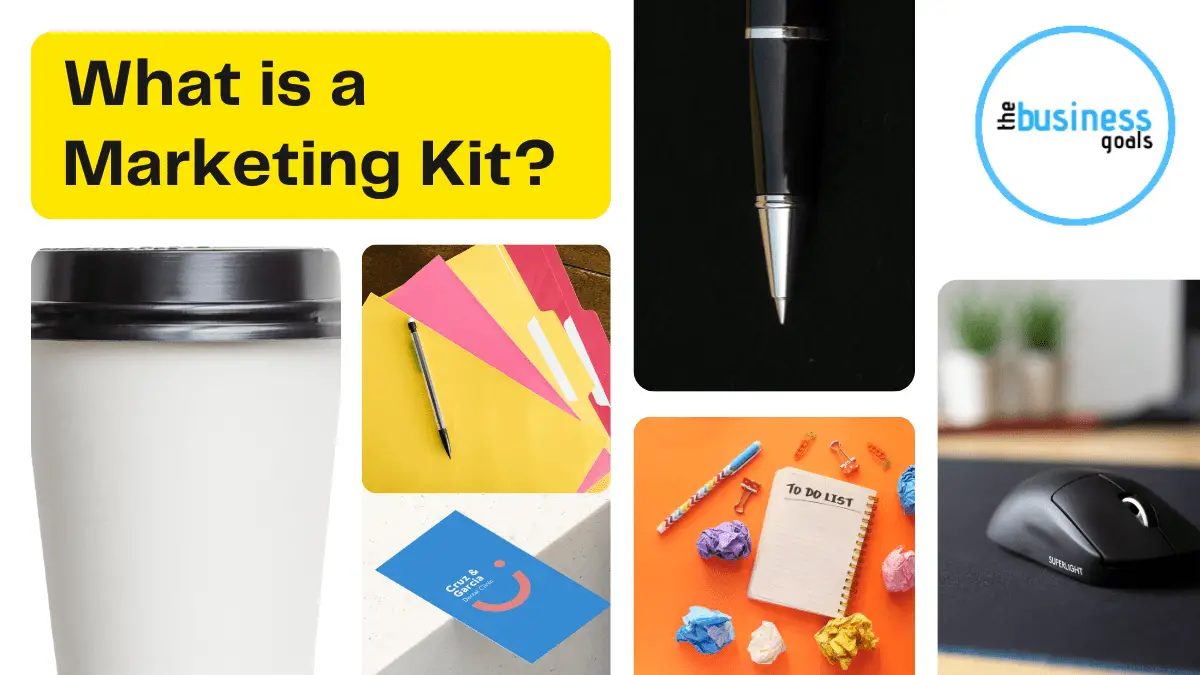A marketing kit usually consists of the following;
Presentation folder
A presentation folder keeps everything together. If your budget doesn’t allow for custom-printed presentation folders, you can buy blank folders and customize them with branding stickers. You can also investigate special paper for your folder. If you do use a custom-printed folder, remember not to have it printed with information that might change in the future.
Business cards
Business cards are a key component of a marketing kit. It is something small, convenient, and informative that you can leave for people to get into contact with you at a later stage.
Whatever you do, don’t opt for the commonplace landscape black and white card. Go for something unusual that will stay in the mind of those who receive it.
Also, vary the business cards you include in your marketing kit according to the people that are likely to deal with the recipients of the cards afterward.
Promotional products
Your marketing kit should include a small gift that you can put your branding on. These can include items like:
- Phone charger
- Pen
- Mouse mat
- Magnet
- Coffee cup
- T-shirt/cap
- Notepad
- Calendar
Think carefully about your promo product; it should be useful and a logical reminder of your company and what it does. If your company sells mobile phones, a phone charger would make sense.
Promo products have a proven track record as excellent marketing material since they are a constant reminder of your brand.
Product and services list
This is an essential part of any marketing kit. After all, the purpose of a marketing kit is to sell, so you need to be clear on what it is that’s for sale.
Consumers want to cut to the chase as soon as possible. They want to know if a business has what they are looking for, so they can decide whether to do business with you or move on. Naturally, a complete product and service list is much more achievable with a digital marketing kit. It is also easier to make the list interesting with videos, but a print kit can include images and infographics to lend interest to the information.
Remember to clearly state how your products and services can benefit your customers, and include a price list.
Process description
Consumers like to understand what they are paying for. If you provide a service, customers would be more eager to do business with you if you give them an insight into your process. For instance, if you are a solar company, you need to explain to customers about preparing the site, the installation, and possible maintenance implications. Here pictures and graphics speak louder than words and text.
Client list
The purpose of including a client list is to prove your standing in the industry. Your list of clients proves that your company has been used by others for a professional service. The bigger the names on your client list, the more trustworthy you’ll come across to new customers. The list of clients you have worked with before gives new clients the assurance that you are a professional setup.
New companies that have not built up a client list yet, can skip this part or replace it with information on the management team and their individual achievements to illustrate the company’s bona fides.
Testimonials
Testimonials are great to include in a marketing kit. Testimonials are a text version of a customer’s declaration that your business is great. They are the words of real people who have benefited from your products and services in the past and serve as proof of your company’s integrity.
Testimonials are more valuable than the sales talk of the marketing team since it speaks of an actual experience that was positive.
Consider that nine out of ten people say that they trust testimonials more than what companies say about themselves.
If you are creating a digital marketing kit, be sure to include video testimonials. Research shows that 37% of people believe testimonial videos are effective because they’re more authentic than what a business says about itself.
Case studies
A case study shows in detail how a company has solved a problem for a customer. Putting together a case study is a compelling way to demonstrate the value of your offerings and attract new customers.
A case study shows how your product or service has helped a customer in real life and importantly, also includes quotes by the customer, which contributes to the authenticity of the exercise. This is not just what your marketing team is saying, it’s what an actual client has seen and experienced – there isn’t any marketing material that can match it.
Presentation folder
A presentation folder keeps everything together. If your budget doesn’t allow for custom-printed presentation folders, you can buy blank folders and customize them with branding stickers. You can also investigate special paper for your folder. If you do use a custom-printed folder, remember not to have it printed with information that might change in the future.
Business cards
Business cards are a key component of a marketing kit. It is something small, convenient, and informative that you can leave for people to get into contact with you at a later stage.
Whatever you do, don’t opt for the commonplace landscape black and white card. Go for something unusual that will stay in the mind of those who receive it.
Also, vary the business cards you include in your marketing kit according to the people that are likely to deal with the recipients of the cards afterward.
Promotional products
Your marketing kit should include a small gift that you can put your branding on. These can include items like:
- Phone charger
- Pen
- Mouse mat
- Magnet
- Coffee cup
- T-shirt/cap
- Notepad
- Calendar
Think carefully about your promo product; it should be useful and a logical reminder of your company and what it does. If your company sells mobile phones, a phone charger would make sense.
Promo products have a proven track record as excellent marketing material since they are a constant reminder of your brand.
Product and services list
This is an essential part of any marketing kit. After all, the purpose of a marketing kit is to sell, so you need to be clear on what it is that’s for sale.
Consumers want to cut to the chase as soon as possible. They want to know if a business has what they are looking for, so they can decide whether to do business with you or move on. Naturally, a complete product and service list is much more achievable with a digital marketing kit. It is also easier to make the list interesting with videos, but a print kit can include images and infographics to lend interest to the information.
Remember to clearly state how your products and services can benefit your customers, and include a price list.
Process description
Consumers like to understand what they are paying for. If you provide a service, customers would be more eager to do business with you if you give them an insight into your process. For instance, if you are a solar company, you need to explain to customers about preparing the site, the installation, and possible maintenance implications. Here pictures and graphics speak louder than words and text.
Client list
The purpose of including a client list is to prove your standing in the industry. Your list of clients proves that your company has been used by others for a professional service. The bigger the names on your client list, the more trustworthy you’ll come across to new customers. The list of clients you have worked with before gives new clients the assurance that you are a professional setup.
New companies that have not built up a client list yet, can skip this part or replace it with information on the management team and their individual achievements to illustrate the company’s bona fides.
Testimonials
Testimonials are great to include in a marketing kit. Testimonials are a text version of a customer’s declaration that your business is great. They are the words of real people who have benefited from your products and services in the past and serve as proof of your company’s integrity.
Testimonials are more valuable than the sales talk of the marketing team since it speaks of an actual experience that was positive.
Consider that nine out of ten people say that they trust testimonials more than what companies say about themselves.
If you are creating a digital marketing kit, be sure to include video testimonials. Research shows that 37% of people believe testimonial videos are effective because they’re more authentic than what a business says about itself.
Case studies
A case study shows in detail how a company has solved a problem for a customer. Putting together a case study is a compelling way to demonstrate the value of your offerings and attract new customers.
A case study shows how your product or service has helped a customer in real life and importantly, also includes quotes by the customer, which contributes to the authenticity of the exercise. This is not just what your marketing team is saying, it’s what an actual client has seen and experienced – there isn’t any marketing material that can match it.

















